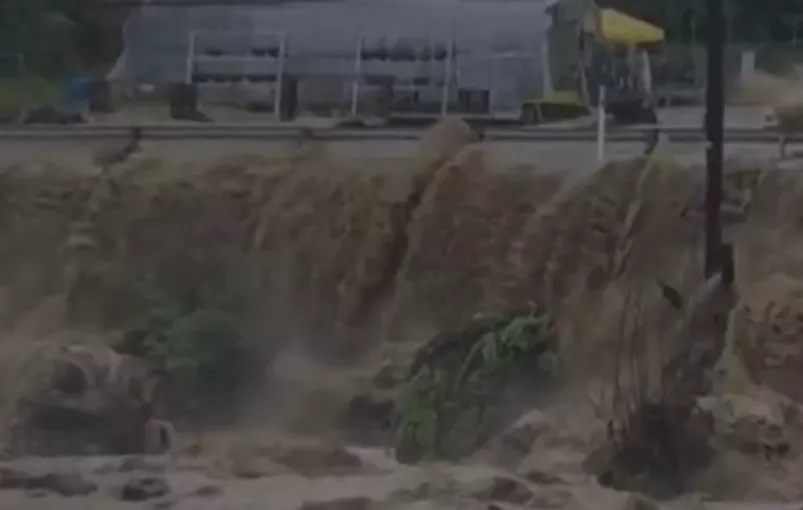
Catastrophic flash floods struck northern West Virginia over the weekend, resulting in at least six confirmed fatalities, including a 3‑year‑old child, and leaving several others unaccounted for. The deluge caused widespread destruction, affecting communities across Ohio County (Wheeling, Triadelphia, Valley Grove) and Marion County (Fairmont).
🕒 Timeline & Rainfall
- Between Saturday night (June 14) and Sunday morning, intense thunderstorms dropped 2.5–4 inches of rain in just 30–40 minutes, overwhelming creeks and urban drainage systems.
- In some parts, rainfall reached up to 5 inches over a 72-hour span.
📍 Impacted Areas
- Wheeling and Triadelphia: Creeks surged by ~7 feet within an hour, sweeping away vehicles and homes—residents described waves like a “tsunami”.
- Valley Grove: Cars and debris littered streets, while bridges and footpaths were washed away.
- Fairmont (Marion County): An apartment building partially collapsed; over 60 homes, 25 businesses, and around 30 roads were damaged.
👥 Casualties & Missing
- Six lives lost, including a toddler; at least two more remain missing in Ohio County.
- Rescue efforts included 19–40 swift-water rescues and search operations using drones, dive teams, and K‑9 units.
🆘 Emergency Response
- West Virginia Governor Patrick Morrisey declared states of emergency in Ohio and Marion counties.
- Agencies including FEMA, the National Guard, local fire, and EMS teams are assisting. Emergency shelters were set up, and utility repairs are ongoing.
🛠️ Infrastructure Damage
- Numerous bridges and roads were washed out, making access difficult .
- Power and gas lines were heavily impacted, leaving around 2,500–4,000 residents without electricity or water.
🌦️ Weather Outlook
- The National Weather Service (NWS) advises that a stalled frontal system may bring more rain into midweek, increasing the risk of additional flooding due to already saturated ground .
- AccuWeather notes further storms may extend the high flood risk until the pattern shifts—likely by Thursdayy.
⚠️ Climate Context
- Experts point to this violent, short-duration downpour—where 2.5–4 inches fell in under 40 minutes—as a hallmark of climate change intensifying extreme precipitation.
- West Virginia has experienced increasing flash flooding in recent years, driven by aging infrastructure and limited flood mitigation funds.
🔎 What Locals Are Saying
Local emergency director Lou Vargo described the rapid onset:
“I’ve been doing this 35 years… I’ve never seen anything like this”.
Residents in Triadelphia said water came “like a tsunami… two or three feet high” and swept away a trailer and vehicles.
🆘 Key Advice for Residents
- Avoid driving through floodwaters.
- Stay informed via local alerts.
- Use shelters and support services if displaced.
- Report missing people and document property damage for federal aid.
Summary: A sudden, historic rainfall event triggered devastating floods across northern West Virginia, claiming six lives, displacing residents, and damaging infrastructure. With more rain expected, ongoing rescue and recovery efforts continue amid growing concern over the role of climate change in extreme weather events.

Illustration picture: https://x.com/search?q=west%20virginia%20floods&src=typed_query&f=live


























